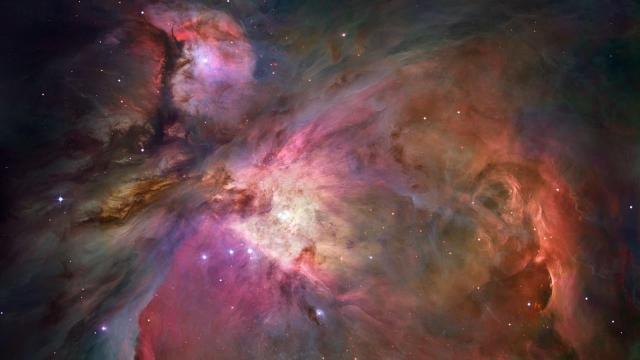A team of astronomers have detected over 500 planet-like objects in the inner Orion Nebula and the Trapezium Cluster that they believe could shake up the very definition of a planet.
The 4-light-year-wide Trapezium Cluster sits at the heart of the Orion Nebula, or Messier 42, about 1,400 light-years from Earth. The cluster is filled with young stars, which make their surrounding gas and dust glow with infrared light.
The Webb Space Telescope’s Near-Infrared Camera (NIRCam) observed the nebula at short and long wavelengths for nearly 35 hours between September 26, 2022, and October 2, 2022, giving researchers a remarkably sharp look at relatively small (meaning Jupiter-sized and smaller) isolated objects in the nebula. These NIRCam images are some of the largest mosaics from the telescope to date, according to a European Space Agency release. Though they cannot be hosted in all their resolved glory on this site, you can check them out on the ESASky application.
A planet, per NASA, is an object that orbits a star and is large enough to have taken on a spherical shape and have cast away other objects near its size from its orbit. According to the recent team, the Jupiter-mass binary objects (or JuMBOs) are big enough to be planetary but don’t have a star they’re clearly orbiting. Using Webb, the researchers also observed low-temperature planetary-mass objects (or PMOs). The team’s results are yet to be peer-reviewed but are currently hosted on the preprint server arXiv.
“Orion is the nearest region of massive star formation to the Sun,” said study co-author Mark McCaughrean, the European Space Agency’s senior advisor for science and exploration, in a Space Telescope Science Institute release. “There are places closer to the Sun that have young, low-mass stars, but there are none closer that have both big stars and the very smallest objects.”

In the preprint, the team describes 540 planetary mass candidates, with the smallest masses clocking in at about 0.6 times the mass of Jupiter. According to The Guardian, analysis revealed steam and methane in the JuMBOs’ atmospheres. The researchers also found that 9% of those objects are in wide binaries, equivalent to 100 times the distance between Earth and the Sun or more. That finding is perplexing, because objects of JuMBOs’ masses typically orbit a star. In other words, the JuMBOs look decidedly planet-like but lack a key characteristic of planets.
The term “planet” has a winding history. As Ryan Mandelbaum reported for Gizmodo back in 2019:
A planet initially referred to anything that wandered across the sky, including the comets, the Sun, and the Moon. As scientists looked closer at the objects in the sky, they realized that Earth orbits the Sun, and that the other objects in the solar system could be further sorted. Planet earned a “you know one if you see one” kind of definition—Mercury, Venus, Earth, Jupiter, Saturn, Uranus, and Neptune are pretty obviously planets. The Moon wouldn’t be a planet, because it’s a moon. We’ve since assigned importance to these named planets and identify strongly with them.
So what are the JuMBOs? It’s still not clear whether the objects form like planets—by accreting the gas and dust from a protoplanetary disk following a star’s formation—or more like the stars themselves. The Trapezium Cluster’s stars are quite young; according to the STScI release, if our solar system were a middle-aged person, the cluster’s stars would be just three or four days old. It’s possible that objects like the JuMBOs are actually common in the universe, but Webb is the first observatory that has the ability to pick out the individual objects.
Webb will continue to scrutinize these free-floating planet-sized non-planets, alongside other small stars and brown dwarfs. More imaging of the candidate objects is planned for spring 2024. The more the telescope sees, the better astronomers might be able to draw the imaginary lines that distinguish one type of object from another.
